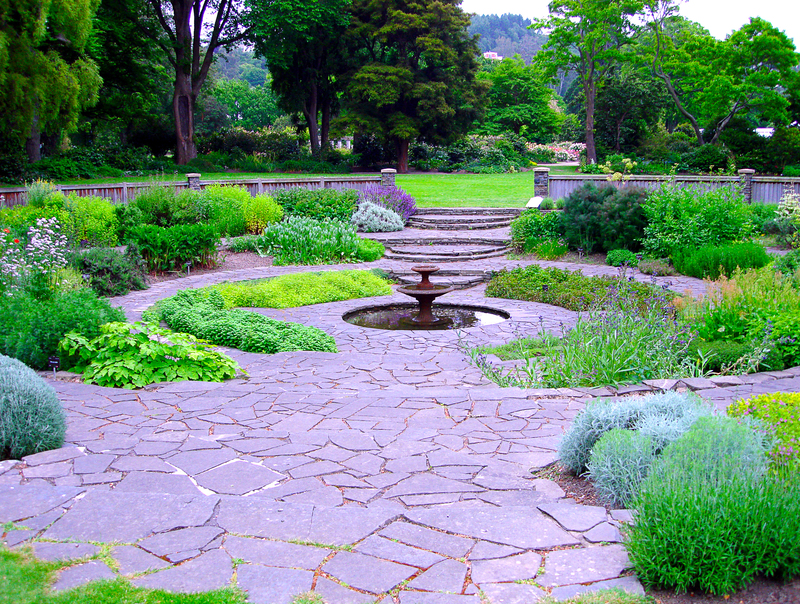Winds of Change: Tailoring Your Garden for Peaceful Breezes
Posted on 18/08/2025
Winds of Change: Tailoring Your Garden for Peaceful Breezes
In today's fast-paced world, finding solace in nature is more important than ever. For many homeowners and gardening enthusiasts, designing a garden that harmoniously blends with the natural flow of wind is the key to outdoor bliss. If you've ever dreamed of transforming your backyard into a serene retreat, embracing the winds of change can elevate your outdoor space from ordinary to extraordinary. This comprehensive guide shows you how to tailor your garden for peaceful breezes, optimize plant selection, and incorporate landscape features for maximum comfort and beauty.
Understanding the Importance of Wind in Garden Design
Before diving into the specifics of transforming your garden, it's crucial to understand why wind matters in landscape design. The winds of change not only bring cooling relief on hot days but also impact plant health, garden comfort, and even the longevity of your outdoor structures.
- Microclimates: Wind can create unique microclimates, affecting how plants grow and how comfortable your garden feels.
- Plant Stress: Strong, persistent winds can stress or damage plants, while gentle breezes can help reduce pests and improve air circulation.
- Human Comfort: Harnessing or deflecting wind can make your garden a haven no matter the season.
By tailoring your space for soothing airflow, you transform your garden into a peaceful sanctuary.

Analyzing Wind Patterns in Your Garden
The first step in creating a garden that celebrates gentle breezes is understanding the wind patterns unique to your property.
1. Study the Direction and Intensity
Every garden is unique. To maximize the benefits of peaceful breezes:
- Spend several days observing wind direction at different times.
- Use flags, windsocks, or even lightweight fabric to identify wind hotspots.
- Note obstacles like fences, trees, or buildings that channel or block air movement.
- Consult local weather data to understand seasonal changes and average wind speeds.
2. Map Your Garden's Wind Zones
Create a simple sketch and mark areas that are:
- Exposed to strong winds
- Enjoying mild breezes
- Sheltered from all wind
This knowledge will help you decide which areas to buffer, which to embrace, and where to arrange seating for the most enjoyable experience.
Designing with the Winds of Change: Layout and Structure
1. Windbreaks for Tranquility
To ensure peaceful breezes rather than blustery gales, strategic placement of windbreaks is key. Windbreaks act as shields that slow and redirect wind.
- Hedges and Shrubs: Dense, layered hedges like privet, boxwood, or holly form natural wind filters while adding year-round interest.
- Trees: Deciduous trees such as maple or evergreen varieties like pine can both absorb and deflect high winds.
- Fences and Screens: Permeable materials (like slatted wood, trellis, or lattice) soften gusts better than solid walls, preventing destructive eddies.
- Living Walls: Climbing plants grown on vertical structures cool and cleanse the air, providing a natural, attractive wind barrier.
Arrange windbreaks at right angles to prevailing winds and stagger plantings for optimum effect, allowing gentle breezes to filter rather than block airflow.
2. Embracing the Breeze in Garden Seating Areas
A garden designed for comfort and relaxation must offer tranquil spots where gentle winds can be enjoyed.
- Patios and Pergolas: Place outdoor seating in areas that capture the lightest wind on hot days and shelter from strong gusts on brisk evenings.
- Movable Furniture: Give yourself flexibility to reorient chairs and tables with the season or weather changes.
- Shade Structures: Use pergolas and arbors draped with vines to filter sun and soften breezes without blocking views.
A thoughtful approach lets you enjoy the winds of change as a soothing feature, not a disruptive force.
Plant Selection: Creating a Lush, Breezy Oasis
Plants are not just decorative--they are the quiet champions when it comes to moderating wind. The right mix will both protect delicate flowers and invite refreshing airflow.
1. Layering for Protection and Movement
Emulate nature's patterns by layering your plantings:
- Tall trees and large shrubs break up strong winds, offering shelter.
- Medium-sized bushes filter and calm the breeze further.
- Ornamental grasses and low perennials catch the wind, creating movement and soft sound.
This structure not only shields sensitive plants but also brings life and motion to your garden, celebrating the dynamic beauty of gentle winds.
2. Plant Varieties that Dance in the Wind
Why merely tolerate wind when you can showcase it? Select plants that sway, rustle, and glisten in the breeze:
- Grasses: Miscanthus, Panicum, and Pennisetum are classic choices for movement and sound.
- Bamboo: Creates a rustling chorus as canes and leaves move together.
- Flowering Perennials: Plants like Gaura, Salvia, and Verbena have delicate stems that flutter attractively.
Such selections turn gusty afternoons into enchanting performances, transforming your garden into a place alive with nature's music.
3. Trees for Wind Management
Incorporate trees into your design for both structure and function:
- Deciduous Trees: Provide summer shade while letting in winter sun as leaves drop.
- Evergreens: Offer year-round wind protection and privacy.
- Fast-Growing Species: Willow, poplar, and alder can quickly establish wind protection in new gardens.
Hardscape Features to Complement Peaceful Breezes
Winds of change don't just shape plants--they also influence your hardscape. Thoughtful design of paths, walls, and water features can optimize the effects of wind in your garden.
1. Water Features for Tranquility
- Fountains: The gentle sound of water can mask background noise, making the movement of breeze even more sublimely peaceful.
- Ponds: Strategically located ponds cool the air and reflect the motion of wind through surrounding foliage.
Position water elements so that gentle winds waft their refreshing coolness towards seating areas, creating a microclimate of comfort.
2. Garden Paths and Openings
- Curving Paths: Guide breezes softly through the landscape, preventing strong gusts from funneling directly into sitting or dining spaces.
- Gates and Arbors: Frame views and channel airflow, adding structure and serenity to your design.
Encourage natural movement with pathways that follow the gentle flow of wind, allowing every corner of your garden to benefit from the winds of change.
Innovative Accessories for Wind-Crafted Gardens
Lovely gardens are filled with personality! Introduce accessories that not only withstand the wind, but celebrate it:
- Wind Chimes: Select materials and designs for soft, melodious sounds that evoke tranquility.
- Garden Sculptures: Choose kinetic art that moves or spins in the breeze, adding a whimsical touch.
- Weather Vanes and Spinners: These functional art pieces bring visual interest and highlight the changing direction of the wind.
A few well-chosen accessories underscore your garden's connection to nature's rhythms.
Energy Efficiency: Harnessing Wind for Practical Gains
A garden tailored for peaceful breezes can also contribute to energy saving in your home:
- Natural ventilation: Guide cooling breezes towards windows and doors, reducing dependence on air conditioning.
- Wind turbines: For larger properties, small-scale wind-powered generators can complement your garden's eco-friendly ethos.
Intelligent wind management makes your garden an integral part of a sustainable home.
Maintenance and Troubleshooting: Keeping Breezes Peaceful
Common Problems and Solutions
- Plant Damage: If branches or stems break in strong winds, consider pruning for shape and adding supports or windbreaks.
- Wind Tunnels: Straight pathways or openings may channel winds too strongly; soften their effect with staggered plantings or screens.
- Debris Accumulation: Gentle breezes can become less pleasant if leaves and dust collect--routine maintenance ensures lasting comfort.

Design Inspiration: Garden Styles for Peaceful Breezes
For a garden that truly embodies the winds of change, consider these design themes:
- Mediterranean Gardens: Embrace open courtyards, tiled paths, and drought-tolerant plants swaying in the breeze.
- Japanese Zen Gardens: Minimalist layouts, water features, and carefully placed rocks focus on tranquility and movement.
- Prairie and Meadow Gardens: Tall grasses and wildflowers create dynamic beauty in the wind, attracting pollinators and wildlife.
- Modern Minimalist: Use simple structures, raised planters, and statement accessories to shape and accentuate airflow.
Conclusion: Embrace the Winds of Change for a Peaceful Garden Retreat
By tuning into your garden's wind patterns and tailoring your space for gentle breezes, you can unlock the full potential of your outdoor sanctuary. Whether you crave a quiet nook for meditation, a vibrant entertaining space, or an eco-friendly landscape that harnesses the power of wind, the opportunity is yours. Invest in thoughtful plant selection, strategic layouts, and inspiring accessories to create a garden shaped by nature's gentle touch.
With these winds of change guiding your hand, your garden will become a place of peace, beauty, and comfort--one that soothes the soul and welcomes every breeze with open arms.

